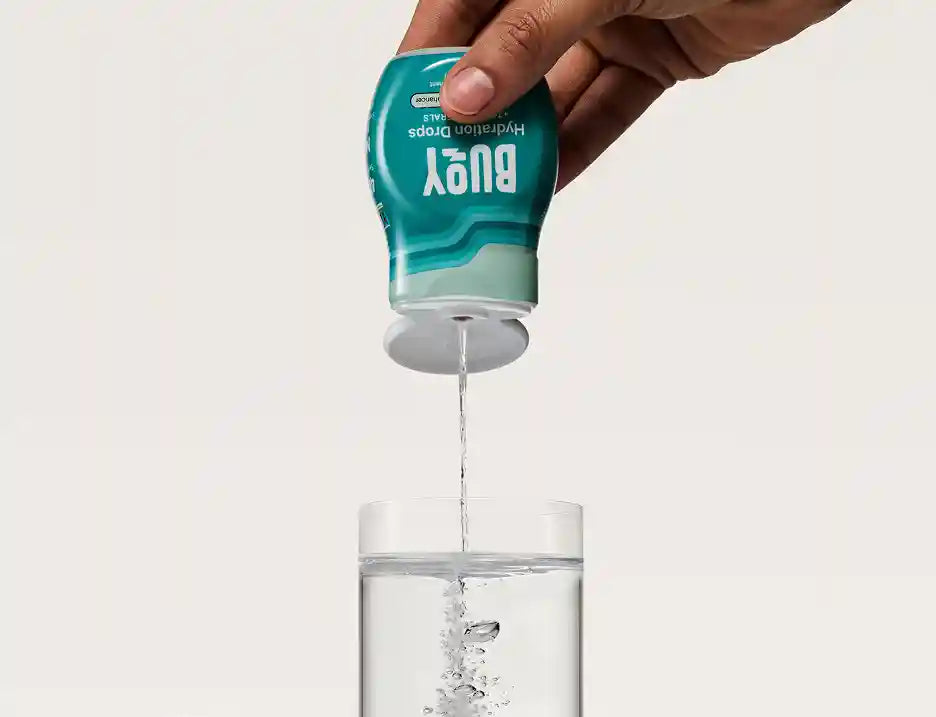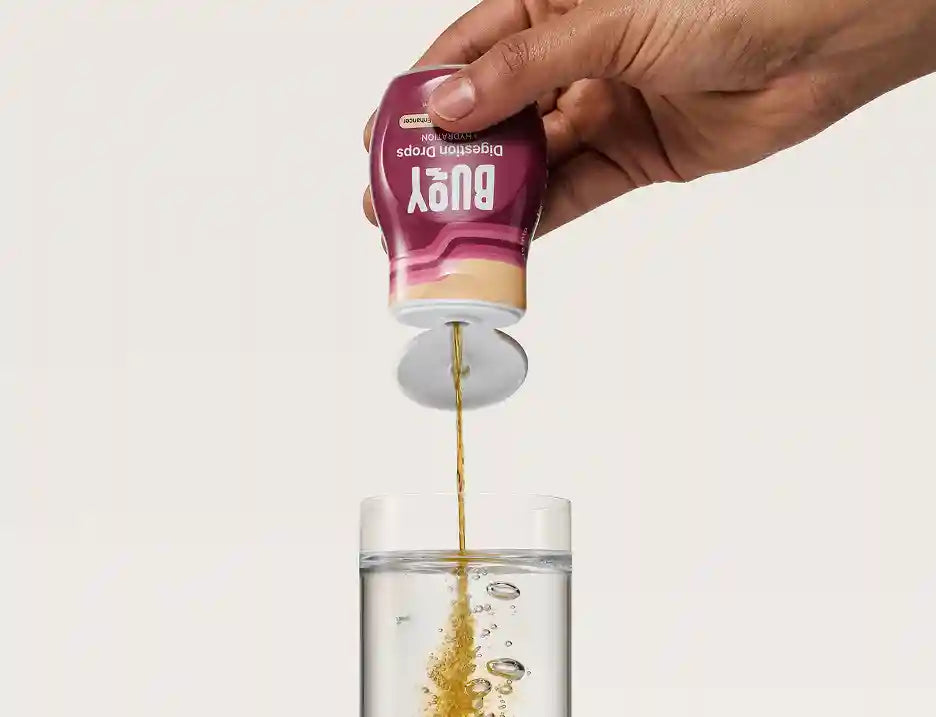
Expert Tips on Managing POTS Symptoms
Living with Postural Orthostatic Tachycardia Syndrome (POTS) can feel like a daily rollercoaster ride. One minute you're fine; the next, you're dizzy, nauseated, and struggling to stay upright. If you're nodding along, thinking, “Yep, that's my life,” then you're in the right place.
We've gathered insights from top POTS experts to help you take control of your symptoms and get back to living your best life. These expert tips for POTS management might surprise you, offering new ways to approach your condition.
So, grab a glass of water (staying hydrated is key, after all!), get comfy, and let’s explore these expert tips together. Whether you’re newly diagnosed or a POTS veteran, there’s something here for everyone.
Essential Takeaways:
- Individualized Treatment is Essential: There’s no one-size-fits-all approach when dealing with POTS and comorbidities. Experts emphasize the importance of tailoring treatment plans to each patient’s unique combination of symptoms and conditions, which may involve collaborating with multiple specialists.
- Learn How to Advocate for Yourself: Given the complexity of POTS with comorbidities, experts stress the importance of patients being active participants in their care. Keeping detailed symptom journals, asking questions, and communicating openly with healthcare providers can lead to more accurate diagnoses and more effective treatment strategies.
Ready to turn the tables on POTS? Let’s get started!
- Understanding POTS Symptoms
- Diet and Nutrition Tips
- Exercise and Physical Activity
- Medication Management
- Lifestyle Changes
- Empower Yourself with Expert Advice
Understanding POTS Symptoms
Postural Orthostatic Tachycardia Syndrome (POTS) can feel like your body's playing a frustrating game of “let's see how many symptoms we can throw at you today.” The most common symptoms include dizziness, lightheadedness, rapid heartbeat, and fatigue, especially when you stand up.
But that's not all. You can also experience brain fog, nausea, headaches, and even fainting, too (1).
Recognizing Your Symptoms
Recognizing these symptoms is your first step to managing them. Pay close attention to your symptoms. When do they intensify? What situations seem to trigger them?
This awareness is invaluable. It helps you anticipate challenges and take action before symptoms knock you off your feet (sometimes literally).
Tracking Symptom Patterns
By tracking these patterns, you're not just passively experiencing POTS—you're actively managing it. This proactive approach can help you regain a sense of control and improve your quality of life, even on days when symptoms try to get the upper hand.
Developing Effective Management Strategies
Managing these symptoms effectively isn't just about surviving—it's about thriving. By understanding your unique symptom profile and applying expert advice for POTS, you can work with your healthcare team to develop strategies that actually work for you.
Remember, you're the expert on your body. Trust your instincts and don’t hesitate to speak up about what you’re experiencing.
Diet and Nutrition Tips
What you eat can be a game-changer when it comes to managing POTS symptoms. The right nutrition strategy, based on expert tips for POTS, can help stabilize your blood pressure, reduce dizziness, and boost energy levels.
How Diet Impacts POTS Symptoms
Proper diet choices can help your body retain fluids better, regulate blood flow, and provide sustained energy throughout the day. Fine-tuning your eating habits can make symptoms less intense and less frequent by providing your body with the right fuel. (1,2).
Expert Recommendations for POTS Diet
But what exactly should you eat when you have POTS? Here’s what the experts recommend:
- Optimize Your Hydration: Aim for 2-3 liters of fluids daily. Water is great, but electrolyte drinks can give you an extra boost.
- Get More Salt: Unlike many health conditions, POTS often benefits from increased salt intake. Aim for 3-5 grams per day, but always check with your doctor first. Adding Buoy’s Rescue Salt to your food and drinks can be an easy and effective way to increase your salt intake.
- Smaller, Frequent Meals: Large meals can worsen symptoms. Try eating smaller portions more often throughout the day.
- Embrace Complex Carbs: They help stabilize blood sugar and provide sustained energy. Think whole grains, sweet potatoes, and legumes.
- Protein Power: Include lean proteins in each meal to help maintain muscle mass and improve blood flow (1,2).
These dietary strategies can make a significant difference in managing POTS symptoms. However, it's important to remember that everyone's body responds differently.
What works well for one person might not be as effective for another. That's why it’s crucial to pay attention to how your body reacts to different foods and eating patterns.
Foods to Avoid or Limit
While focusing on what to eat is important, it's equally crucial to be aware of foods that might exacerbate your POTS symptoms. Some items can trigger symptom flare-ups or interfere with your body's ability to manage the condition effectively.
Here are a few common culprits to watch out for:
- Caffeine and Alcohol: Both can be dehydrating and may worsen symptoms.
- High-Sugar Foods: They can cause rapid blood sugar fluctuations.
- Very Hot Foods or Drinks: They can trigger blood vessel dilation and worsen symptoms (1,2).
Remember, everyone's body responds differently. Keep a food diary to identify your personal triggers and discuss it with a nutritionist familiar with POTS.
Consulting Your Healthcare Practitioner
Before making any significant changes to your diet, especially regarding salt intake, it’s crucial to consult with your healthcare provider. They can help you determine the right approach based on your individual health status, medications, and other factors that might influence your dietary needs.
Working with a POTS Dietitian
Consider working with a registered dietitian who has experience with POTS. They can provide personalized advice, help you create a meal plan tailored to your needs, and guide you through the process of identifying trigger foods.
A knowledgeable dietitian can also help you navigate challenges like eating out or managing your diet during symptom flare-ups. Their expertise can be invaluable in developing a sustainable, effective nutrition strategy for managing your POTS symptoms.
Discover more about what to eat with POTS with our comprehensive guide to POTS and Nutrition: Vitamins and Supplements.

A nutritious meal ideal for managing POTS symptoms might consist of high fiber vegetables and complex carbohydrates to stabilize blood sugar and support overall health.
Exercise and Physical Activity
Okay, let's address the elephant in the room—exercise can be scary when you have POTS. And for good reason. Many POTS patients have experienced dizziness, rapid heartbeat, or even fainting during physical activity (1).
Understanding Exercise Fears in POTS
The very symptoms that define POTS—increased heart rate and lightheadedness upon standing—can intensify during exercise, making it feel risky or overwhelming. You might worry about pushing yourself too hard and triggering a flare-up or fear the exhaustion that often follows exertion.
But here's the good news: with the right approach, physical activity can actually improve your symptoms over time (1).
The Benefits of Exercise for POTS
You might be wondering, “Why should I even try to exercise if it's so challenging?” Well, regular physical activity can offer significant benefits for POTS patients in the long run.
Exercise helps to strengthen your heart and blood vessels, improving your body's ability to regulate blood flow. This can lead to better blood pressure control and reduced dizziness over time. Moreover, consistent physical activity can increase your overall stamina, reduce fatigue, and improve your quality of life.
Many POTS patients find that with a proper exercise regimen, they experience fewer symptoms and are better able to perform daily activities. Exercise can also help manage anxiety and depression, which are common in POTS patients (1,3).
Expert Recommendations for Safe Exercise
Despite the challenges, experts agree that carefully planned and executed exercise can be beneficial for those with POTS. Here are some key strategies they recommend to help you get moving safely and effectively, contributing to reducing POTS symptoms over time:
- Start Low and Go Slow: Begin with reclined exercises like swimming or recumbent biking. These put less stress on your cardiovascular system.
- Resistance Training is Your Friend: Exercises that work your leg muscles can help improve blood flow. Try leg lifts or using resistance bands while seated.
- Gradual Progression: Slowly increase duration and intensity over weeks or months. Listen to your body and don't push too hard.
- Consistency is Key: Aim for short, regular sessions rather than long, infrequent workouts.
- Cool Down Properly: Take time to transition slowly back to an upright position to avoid symptom flare-ups (1,3).
These guidelines are designed to help you build up your exercise tolerance gradually and safely. Remember, the goal is to improve your symptoms and overall health, not to push yourself to exhaustion. Start with what feels manageable, even if it's just a few minutes a day, and slowly build from there.
By following these expert recommendations and listening to your body, you can begin to harness the benefits of exercise without overwhelming your system. Over time, you may find that regular physical activity helps to reduce your POTS symptoms and improve your quality of life.
Always consult your healthcare provider before starting any new exercise regimen.
Incorporating Movement into Your Daily Life
Physical activity doesn't always mean structured exercise. There are many ways to increase your movement throughout the day, even when you're managing POTS symptoms.
Here are some easy ways to incorporate physical activity into your daily routine.
- Morning Stretches: Start your day with gentle stretches while still in bed.
- Chair Exercises: Do simple leg lifts or arm circles while watching TV.
- Walk in Place: During phone calls, try walking in place or doing gentle marches.
- Household Chores: View daily tasks like folding laundry as opportunities for movement.
Remember, what works for one person may not work for another. Work with a physical therapist or exercise physiologist who understands POTS to develop a personalized plan.
And always, always listen to your body. Some days you might do less, and that’s okay. The goal is progress, not perfection.
Learn more about exercising with POTS in our article, Exercise and Physical Therapy for POTS: A Guide to Safe Workouts.

Medication Management
For many people with POTS, medication plays a crucial role in symptom management. Expert advice for POTS often includes a combination of pharmacological and non-pharmacological approaches to provide comprehensive relief.
The Role of Medications in Managing POTS Symptoms
Medications for POTS are typically aimed at addressing specific symptoms or underlying mechanisms of the condition. Common goals include:
- Increasing blood volume
- Regulating heart rate
- Improving blood flow
- Reducing dizziness and fainting episodes
- Managing fatigue and brain fog
It's important to note that there's no one-size-fits-all medication regimen for POTS. Treatment plans are highly individualized and may require some trial and error to find the most effective combination.
Expert Advice on Effective and Safe Medication Use
Managing medications for POTS requires careful attention and collaboration with your healthcare team. To help you navigate this aspect of treatment more effectively, experts in POTS management offer the following advice:
- Work Closely with Your Healthcare Provider: POTS specialists emphasize the importance of regular follow-ups to monitor medication effectiveness and adjust dosages as needed.
- Be Patient: It may take time to find the right medication or combination of medications. Don't get discouraged if the first attempt doesn't yield immediate results.
- Keep a Medication Diary: Track your symptoms, side effects, and any improvements you notice. This information can be invaluable for your healthcare team.
- Be Aware of Potential Interactions: Inform all your healthcare providers about all medications you're taking, including over-the-counter drugs and supplements.
- Don’t Stop Medications Abruptly: Always consult your doctor before discontinuing any medication, as sudden changes can sometimes worsen symptoms.
- Consider Non-Pharmacological Approaches: Medications often work best when combined with lifestyle changes and other management strategies (4).
Remember, while medications can be very helpful, they're just one part of a comprehensive POTS management plan. Always follow your healthcare provider's instructions and report any concerns or side effects promptly.
Get more POTS medication tips in our article, Mastering Medication for POTS: Your Essential Guide to Effective Management.
Lifestyle Changes
While medications and medical interventions play a significant role in managing POTS, lifestyle adjustments can be equally important. These changes, based on expert tips for POTS, can help in reducing POTS symptoms and improve overall well-being (5).
Sleep
Quality sleep is crucial for POTS patients. Poor sleep can exacerbate symptoms and reduce the body's ability to cope with the condition. Here are some expert tips:
- Maintain a consistent sleep schedule, even on weekends.
- Create a relaxing bedtime routine.
- Keep your bedroom cool, dark, and quiet.
- Elevate the head of your bed slightly to improve circulation.
- Avoid screens for at least an hour before bedtime.
Hydration
Proper hydration is vital for managing POTS symptoms. Experts recommend:
- Aim for 2-3 liters of fluids daily.
- Include electrolyte drinks in your fluid intake.
- Drink consistently throughout the day.
- Increase fluid intake during hot weather or physical activity.
- Consider using a hydration tracking app to ensure you're meeting your goals.
Stress Management
Stress can trigger or worsen POTS symptoms. Implementing stress-reduction techniques can be beneficial:
- Practice mindfulness or meditation.
- Try deep breathing exercises.
- Engage in gentle yoga (adapted for POTS).
- Consider cognitive-behavioral therapy.
- Prioritize activities that you find relaxing and enjoyable.
Additional Lifestyle Tips
Beyond the core strategies of sleep, hydration, and stress management, there are several other lifestyle adjustments that can significantly impact POTS symptoms. Consider incorporating these expert-recommended tips into your daily routine:
- Compression Garments: Wearing compression stockings or abdominal binders can help improve blood flow.
- Temperature Management: Avoid extreme temperatures and use cooling techniques in hot weather.
- Pacing: Learn to balance activity with rest to avoid symptom flare-ups.
- Positional Changes: Move slowly when changing positions, especially when getting up from lying down (1,5).
Remember, lifestyle changes often require time and persistence to show results. Be patient with yourself and celebrate small improvements. It's also important to tailor these strategies to your individual needs and capabilities.
By implementing these expert-recommended strategies—from careful medication management to lifestyle adjustments—you can take significant steps towards reducing POTS symptoms and improving your quality of life.
Empower Yourself with Expert Advice
Living with POTS can be challenging, but armed with these expert tips, you're now better equipped to manage your symptoms effectively.
Remember, everyone's journey with POTS is unique, so don't be discouraged if some strategies work better than others. The key is to be patient, persistent, and proactive in your approach.
Take Steps Toward a Better Quality of Life
By implementing these expert-recommended strategies - from careful medication management to lifestyle adjustments—you can take significant steps towards improving your quality of life.
Start small, celebrate your progress, and don't hesitate to reach out to your healthcare team when you need support.
Explore More Resources
Want to dive deeper into managing your POTS symptoms? Explore our website for more expert advice, in-depth articles, and resources tailored to help you thrive despite POTS.
Consider Hydration Support
And if you're looking for additional support in managing your hydration - a crucial aspect of POTS management—consider trying Buoy’s Hydration Solutions. These electrolyte supplements are designed to help you stay properly hydrated, which can be especially beneficial for POTS patients.
Take control of your POTS journey today. Your path to better symptom management starts here!

References:
- Cleveland Clinic. (2022). Postural Orthostatic Tachycardia Syndrome (POTS). Retrieved from https://my.clevelandclinic.org/health/diseases/16560-postural-orthostatic-tachycardia-syndrome-pots
- UCF Health. (n.d.). The Best POTS Diet: Choosing Which Foods to Eat and Avoid. Retrieved from https://ucfhealth.com/our-services/cardiology/best-pots-diet/
- Self. (2024). How to Safely Exercise With POTS, According to Experts. Retrieved from https://www.self.com/story/how-to-exercise-with-pots
- Standing Up to POTS. (n.d.). Medications for POTS. Retrieved from https://www.standinguptopots.org/resources/medicine
- Dysautonomia International. (n.d.). Lifestyle Adaptations for POTS. Retrieved from https://www.dysautonomiainternational.org/page.php?ID=44




